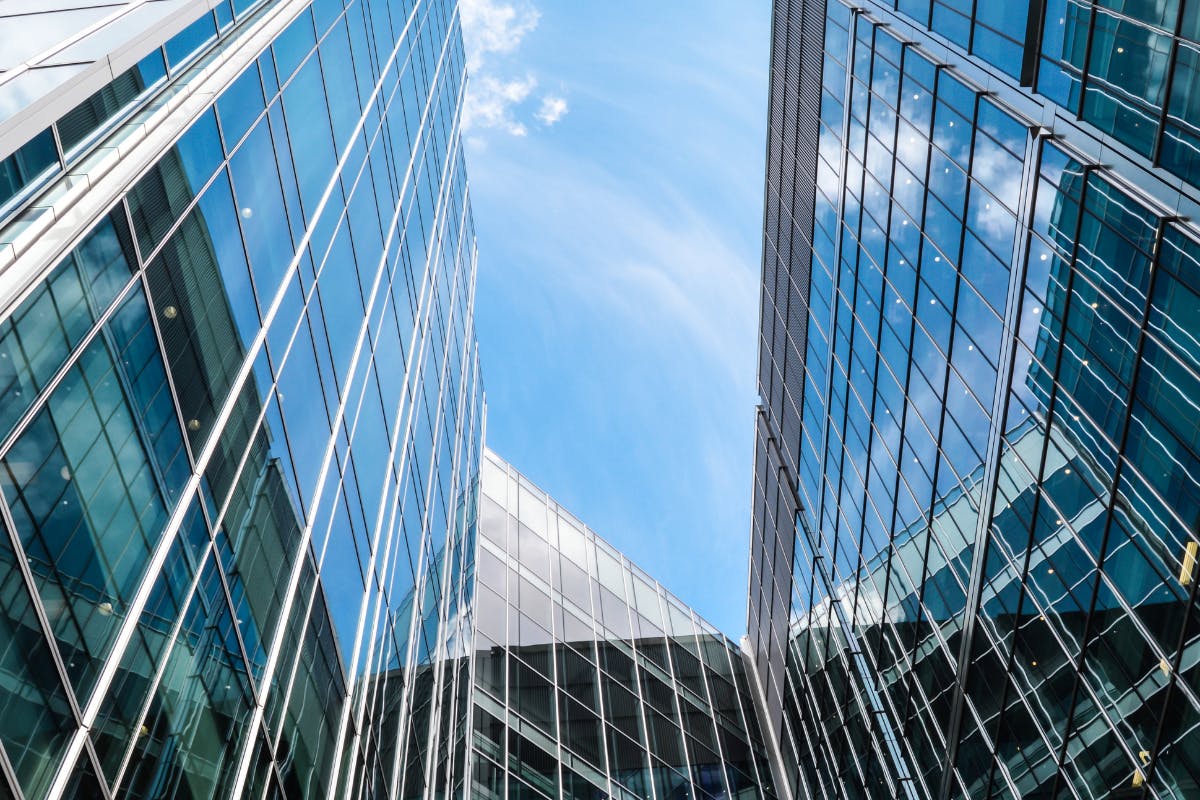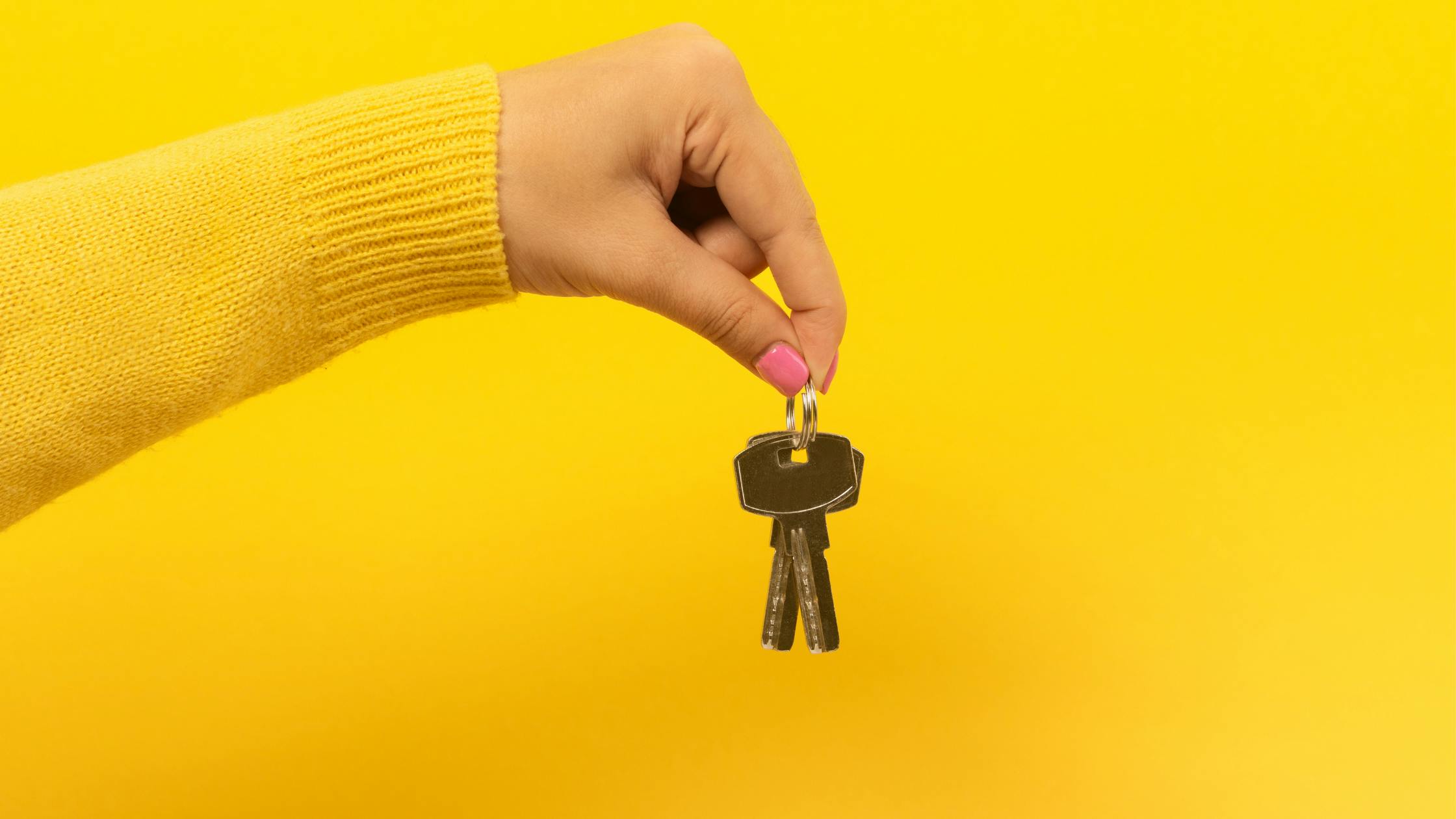What’s the difference between freehold and leasehold?
 Anya Gair
Anya GairWhile you’ve been scrolling through dream houses, you’ve probably seen the words freehold, leasehold or commonhold pop up. Like most jargon in the home buying process, these small words can have a massive impact on the type of property you buy, and the cost. So here’s what you need to know about freehold vs leasehold and commonhold properties.
In this guide
- What is a freehold property?
- What is a flying freehold?
- What is a leasehold property?
- Can a flat be freehold?
- What does share of freehold mean?
- What is a commonhold property?
- What is ground rent?
- Why do I pay ground rent on a freehold property?
- Is my house freehold or leasehold?
- How much does it cost to convert leasehold to freehold?
What is a freehold property?
When you buy a freehold property, this means you own the building and the land that it’s built on, for as long as you like. You can sell it yourself or pass it down the generations. The freeholder is the person who owns the freehold of a property. In a block of flats, the freeholder is the person or company who is responsible for the maintenance and repair of the building.
You might hear the phrase “freehold tenure” when buying a property – this just means that you have full ownership rights to the property and the land it’s on. It’s worth checking you will get this when purchasing a property with the home seller or estate agent.
What is a flying freehold?
A flying or floating freehold is a freehold property which overhangs or lies underneath another freehold. A typical example is a room or flat that is above a shared passageway, or a balcony which extends over another property.
What is a leasehold property?
With a leasehold property, you own the property on a lease for a fixed length of time, but you won’t own the land it’s built on. Once the lease runs out, ownership of both the land and the building goes back to the freeholder.
These leases tend to be very long (some up to 999 years) and transfer from seller to buyer. So when you buy a leasehold house, it might have something like 125 years left on the lease. This is why leasehold properties are seen as investments as opposed to something to pass down the generations as you’ll want to sell them before the lease ends.
Another key difference between freehold and leasehold is leasehold properties often come with additional charges, such as ground rent and service charges, which are charged by the freeholder.
Learn more: Flat vs house: Which one should I buy?
You might also like: What to look for when viewing houses
Need help getting on the ladder?
At Tembo, our award-winning team of mortgage experts are specialists in helping buyers discover ways they can boost their affordability to get on the ladder sooner or access better rates.
Can a flat be freehold?
Flats are typically not freehold, unless you have a share of a freehold or commonhold set up. To purchase the freehold of a flat, you need the flat owners in your building to be willing to purchase the building’s freehold together, in return for a share of freehold each.
What does share of freehold mean?
A share of freehold means you will own a portion of the freehold property. It’s more common with flats, where you own the leasehold for your individual flat and hold a share of the freehold for the entire building and the land it’s on. Together, all the tenants can own a large share of the freehold or even the entire thing.
What is a commonhold property?
A commonhold property is an alternative to leaseholds where instead of owning the property for a fixed time, you buy a ‘unit’ of the property indefinitely and become a ‘unit owner’. Commonhold properties are typically flats, where you’ll own the freehold of your flat and a percentage of the common areas of the building (e.g. the hallways) and the land it’s built on.
All unit owners can become members of the commonhold association, which owns and manages the common parts of the building. This means you can vote on things like building improvements and other decisions that affect the building or land.
What is ground rent?
Ground rent is a contractual payment the leasehold makes to the freeholder for occupying part of the land that they own. When you buy a leasehold, any ground rent will be a condition of the lease, so you will be obliged to pay it as the leaseholder.
In the UK, there are no set guidelines on how much ground rent should be, so technically freeholders could charge whatever they like for ground rent. Something between £200 and £500 is typical, though in more expensive areas like London this could be closer to £1,000.
The laws around ground rent are changing though. As of June 2022, The Leasehold Reform (Ground Rent) Act 2022 banned ground rents for those buying new homes on long leases. However, this new law does not apply to existing leaseholders.
With a leasehold, you might also pay a service charge. This is a fee charged by the freeholder to cover services they provide under the terms of the lease. Traditionally, this would be things like cleaning of communal areas, gardening, general maintenance and repairs and building insurance. But with more modern leaseholds, they might also come with fancy extras like gyms, cinema rooms, and a concierge.
The problem with this is that as part of the lease, you cannot opt out of paying the service charge. If you refuse to pay, the freeholder can take legal action against you. And they can increase them if they see fit, for example if inflation makes the cost of the services they provide more expensive. Butttttttt the costs need to be reasonable. You have the right to challenge any service charges that you feel are unreasonable.
Similarly, your landlord or freeholder can only increase the ground rent if you agree to the increase or the lease says this can happen.
Why do I pay ground rent on a freehold property?
Ground rent exclusively applies to leasehold properties. So if you’re paying ground rent, your property is likely a leasehold property and not a freehold one. It might be that you are a leaseholder, with a share of the freehold, meaning you own a portion of the freehold but not all of it.
Is my house freehold or leasehold?
An easy way to find out if your house is freehold or leasehold is to check the sale details of the property. You can also search the property in the Land Registry or the Land and Property Index - you can ask for a copy of the property deeds, which will tell you what type of ownership the house falls into.
Thinking of moving? We can help you find the mortgage you need to move up the ladder sooner.
How much does it cost to convert leasehold to freehold?
There’s no set cost for converting a leasehold to a freehold, as this depends on the length left on the lease and the value of the property. If the property has a high value, this will make converting it to freehold more expensive. Properties with shorter leases also tend to cost more to purchase the freehold. If you are charged ground rent, this can also increase the cost of obtaining the freehold.
On average, our customers boost their budgets by £88,000
Whether you want to get on the ladder or move up it - you’re in the right place. Tembo can help you discover ways to increase your buying power or help you overcome affordability hurdles to make home happen.



